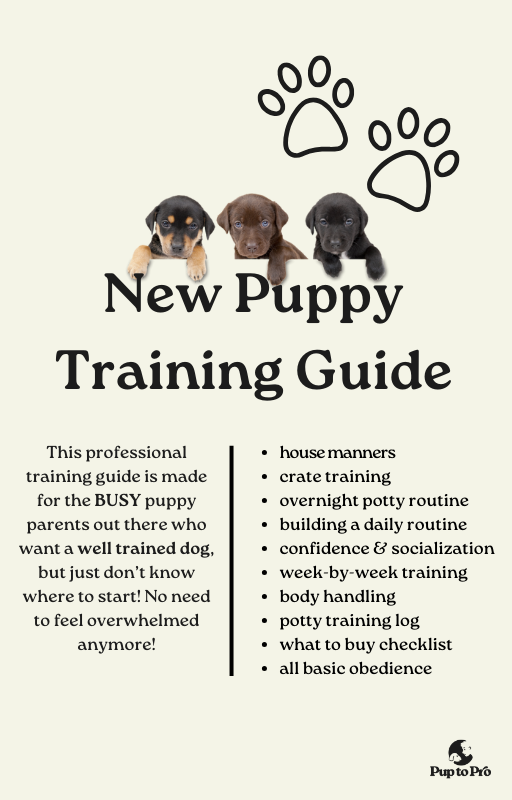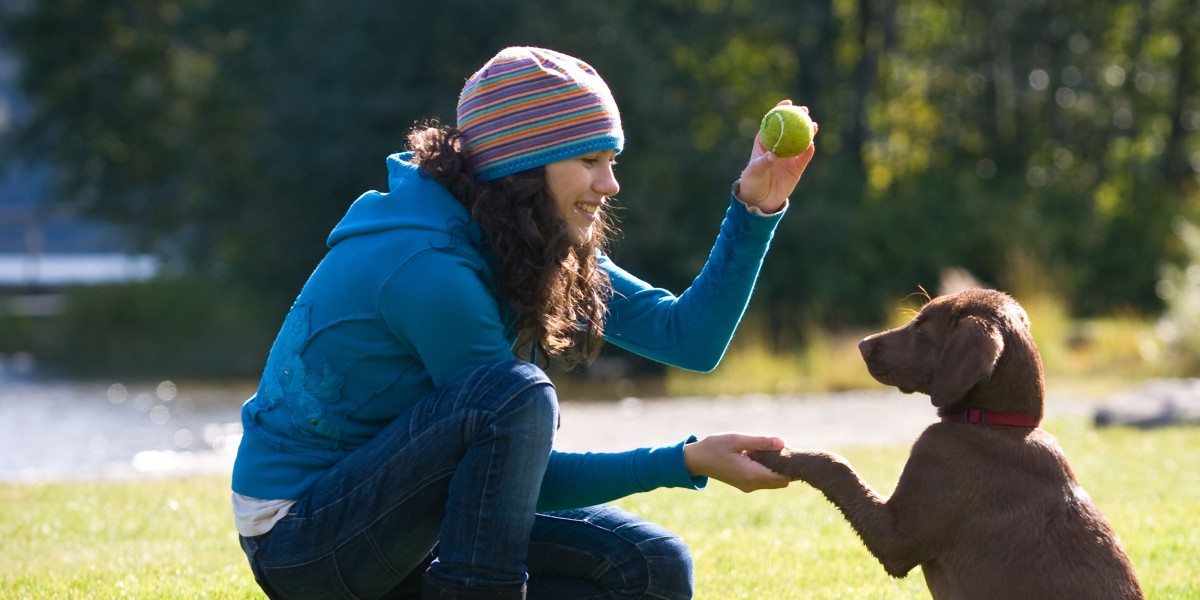Puppy Training Techniques: Teaching Basic Commands for a Happy Pet
Top Young Puppy Training Methods to Make Sure a Mannerly Pet
Efficient young puppy training is vital for growing a mannerly friend, and numerous strategies can significantly affect a dog's advancement. Amongst these, favorable reinforcement stands apart as a fundamental approach, promoting depend on and encouraging desirable behaviors. Consistency in commands and very early socializing are just as vital, preparing for a well-adjusted pet dog. In addition, the roles of cage training and leash decorum can not be overlooked. As we explore these methods further, it becomes clear that the success of young puppy training hinges on a combination of techniques that can transform your pet's behavior in remarkable methods.
Favorable Reinforcement Methods
Using favorable reinforcement techniques is crucial for reliable puppy training, as it motivates desired actions with benefits as opposed to punishment. This method takes advantage of the natural understanding procedures of pets, strengthening etiquette by providing instant and tangible incentives, such as treats, appreciation, or play. By connecting favorable outcomes with certain activities, puppies are more probable to repeat those actions in the future.
Reliable positive reinforcement includes timing and uniformity. Incentives need to be provided promptly after the wanted actions occurs to produce a clear link in the pup's mind. Additionally, varying the sorts of rewards can maintain a puppy's passion and motivation throughout the training process. Some puppies may respond much better to verbal appreciation while others might choose a favorite toy or treat.

Consistency in Educating Commands
Maintaining consistency in training commands is essential for reinforcing the lessons discovered via favorable reinforcement methods. Pet dogs thrive on routine and predictability, so making use of the same verbal commands and hand signals for certain actions is necessary. This harmony aids pups comprehend what is anticipated of them, decreasing complication and frustration for both the fitness instructor and the pet dog.

Timing also plays a substantial function in consistency. Commands should be supplied immediately during training sessions and adhered to instantly by favorable reinforcement, such as deals with or praise. This prompt response aids solidify the organization between the command and the desired habits.
Integrating uniformity into training sessions will develop a steady learning setting, promoting quicker proficiency of commands. Ultimately, a well-structured technique fosters a solid bond between the pup and its owner, causing a more mannerly and loyal family pet.
Socializing With Other Pets
Socializing with various other family pets is critical for a young puppy's development, as it assists them find out suitable behaviors and interaction abilities in diverse social contexts. Very early communications with different pets can significantly affect a puppy's character and flexibility in different scenarios. When puppies are subjected to a selection of animals, they come to be much more certain and less scared, which can protect against prospective behavior concerns later in life.

Furthermore, observing body movement throughout interactions is crucial. Educate your puppy to recognize signals from various other family pets, such as signs of playfulness or pain, cultivating common regard and understanding. Routine socialization not just improves your puppy's social abilities however also contributes to their overall health, producing a more unified living atmosphere. In conclusion, focusing on communications with other pets will certainly generate a all-around and socially adept canine.
Pet Crate Training Advantages
Identifying the various benefits of cage training can pop over to this site greatly improve both the pup's and owner's experience. Crate training offers a secure and protected setting for pups, ensuring they feel safeguarded when laid off. This sense of protection can substantially reduce anxiety and anxiety degrees for both the pet and the owner.
Furthermore, crates act as a useful housebreaking tool. Young puppies normally stay clear of soiling their resting area, thus motivating them to hold their bladder until they are allow outdoors. This reaction can quicken the housebreaking process, promoting great routines beforehand.
Crate training also aids in managing a puppy's actions when without supervision. By offering a designated area, proprietors can stop devastating actions, such as eating on furnishings or entering into damaging compounds. Moreover, cages can be useful during travel, offering an acquainted room More Info that can aid soothe a young puppy in new settings.
Last but not least, developing a dog crate routine urges self-reliance, allowing pups to find out just how to be alone without anxiety. Generally, cage training is an effective approach for promoting safety, peace, and self-control, bring about a well-adjusted, well-behaved pet dog.
Leash Training Basics
Leash training is a fundamental element of responsible pet dog ownership that makes sure a pleasurable and risk-free walking experience for both the young puppy and its proprietor. Appropriate chain training starts early, ideally throughout the pup's socialization duration. When out in public., this training aids establish great routines and promotes favorable behaviors.
To start, pick a comfortable collar or harness that fits your puppy well. Connect a tough chain, ensuring it is not too long, as this can result in drawing and irregular behavior. Start in a peaceful setting to decrease distractions and gradually introduce your young puppy to brand-new environments.
Use favorable support strategies, such as deals with and appreciation, to motivate your young puppy to walk close to you. If your puppy draws, quit strolling and wait for them to return to your side before continuing.
Additionally, incorporate brief training sessions with enjoyable distractions to construct your pup's emphasis. With commitment and persistence, chain training will certainly lead to a hospitable buddy, making strolls pleasurable for both the proprietor and the young puppy.
Conclusion
In conclusion, using effective young puppy training strategies is important for creating a well-behaved family pet. Overall, these techniques jointly promote an unified partnership in between puppies and their owners.
As we discover these approaches further, it comes to be clear that the success read this of young puppy training pivots on a mix of strategies that can transform your family pet's actions in remarkable ways.
Making use of positive reinforcement methods is crucial for effective puppy training, as it motivates preferred actions via rewards rather than punishment.Crate training likewise assists in taking care of a pup's behavior when without supervision.Leash training is a basic facet of accountable animal ownership that makes sure a delightful and secure walking experience for both the puppy and its proprietor.In conclusion, employing efficient pup training methods is important for creating a well-behaved pet dog.